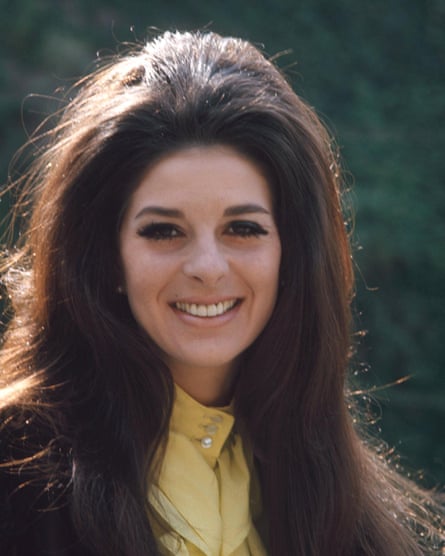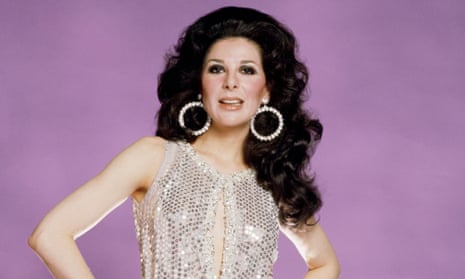The first time I heard Ode to Billie Joe was on a 1967 Radio 1 special. Amid ornate psychedelic pop sounding a little like Strawberry Fields Forever, this tale of suicide, loneliness and familial breakdown was unlike any record I had ever heard. The place names – Tallahatchee, Carroll County, Choctaw Ridge – were cinematic, the singer’s voice was husky, the string arrangement was minimal and eerie. What I heard was thick mud, damp moss, a barely moving river, dead air. The song was an inescapable fug. You couldn’t move. You had to listen.
The singer was Bobbie Gentry who, when the record was released in the summer of 1967, was so undocumented that DJs didn’t know if she was black or white, whether the single was stripped-back soul, funked-up country or some kind of new folk. When she was put on the spot, Gentry would say “I just sing southern.” It was the kind of record you could build a whole career around, and she knew it. It didn’t hurt that she was stylish (all her clothes were her own designs) and very attractive, with piled-up raven hair and saucy brown eyes. She knew how to capitalise on her talent and looks, and ended up with her own BBC TV series, an album of duets with Glen Campbell, and more than a decade wowing Las Vegas, where Elvis Presley and Tom Jones were among the fans in the audience.
A recently released eight-disc box set, The Girl from Chickasaw County, covers the bulk of her recording career: seven albums crammed into a brief period of intense fame between 1967 and 1971. Gentry’s stock has risen over the last decade as she been name-checked by country stars such as Nikki Lane and Kacey Musgraves. Taylor Swift has been coy about the subject of her 2012 song The Lucky One, but it is almost certainly Gentry: “They still tell the legend of how you disappeared, how you took the money and your dignity, and got the hell out.” Gentry effectively retired from the studio in 1971, from the stage in 1981 and hasn’t done an interview in 30-odd years. It was an almost impossible disappearing act, the kind many would love to pull off. She seems a very modern figure, a pioneer for women in pop, and her unavailability has only enhanced her mystique.

Though, as a teenager, Gentry had left the south for Palm Springs – where she changed her name from Roberta Lee Streeter, in tribute to the Jennifer Jones movie Ruby Gentry – her songs were almost always set in and around the Chickasaw County of her childhood, a semi-mythical south, with conversational lyrics about people who were quite likely friends and neighbours. There’s a song about a laughing woman burying her fiance (Casket Vignette), a song about a woman trapped in a mansion, suffocated by love (Courtyard), and seductive songs about food and bed (Marigolds and Tangerines, Morning Glory). Gentry’s voice was often very close-miked. On Morning Glory, from 1968’s The Delta Sweete, it was one of the most sensuous sounds imaginable, as if she were in bed right next to you, whispering in your ear. You can hear her stretching; it sounds as if she could physically stop time.
Sheila B, a DJ at WFMU in New York, says that Gentry’s “songs and style were difficult to pin down”. This confused the industry, as did the fact that “she looked like a Greek goddess and she was deeply involved in tasks usually reserved for men. Obviously there are many factors behind success but, in 1967, America was clearly not ready to roll out the red carpet for the female artist who wrote, played and produced her own material.”
At almost every turn in her story, there is a man who feels slighted. There’s Bobby Paris, the credited producer on Ode to Billie Joe, who kept photos of Gentry with her face scratched out. There’s Jim Ford, an ex-boyfriend who claimed he wrote Ode to Billie Joe, his supposed evidence being that she never wrote another song that was as big (but then, nor did he). She could write, produce, design sets and costumes – she could pretty much do everything – and she liked to work alone. John Cameron was the arranger for her BBC shows: “She was pretty much the alpha female in the group – [producer] Stanley Dorfman’s assistant Kate and choreographer Flick Colby were the only other prominent females in the crew. She certainly didn’t have a support group like Dusty [Springfield].”
Swamp rock singer Tony Joe White (Rainy Night in Georgia, Polk Salad Annie) never had any doubts about Bobbie Gentry’s talent – he credits her with turning him into a songwriter: “I hadn’t started writing yet. I was listening to the radio one day and I heard Ode to Billie Joe. Man, this girl with a great voice, playing a cool guitar, and I thought: ‘How real can you get?’ I thought, I am Billie Joe – I’ve picked cotton, and been in the river and been in the swamps. I thought if I ever write something it’s got to be as real as Ode to Billie Joe. It wasn’t too long after that I started on Polk Salad Annie. I remember the radio, listening to it, the whole thing – it was like a turn-around, you know?”
Others were less generous. In 1974 a writer called Morag Veljkovic questioned Gentry’s feminist credentials: didn’t the tight dresses and teased-up hair contradict a bra-burning stance? “I am a woman working for herself in a man’s field. I am a successful woman record producer,” said Gentry calmly. “Did you know that I took Ode to Billie Joe to Capitol, sold it, and produced the album myself? It wasn’t easy. It’s difficult when a woman is attractive; beauty is supposed to negate intelligence – which is ridiculous. Certainly there are no women executives and producers to speak of in the record business.” Given that the same is almost true more than four decades on, it’s hardly surprising that Gentry feels she is better off keeping her life private.
Her 1969 hit Fancy, recorded with Rick Hall in Muscle Shoals, seemed autobiographical. Gentry never said as much, but the sassy story of a girl who “might have been born just plain white trash but Fancy was my name ... and I ain’t done bad” sounded like a sly confession-cum-celebration. What’s more, the smoky, bordello-set painting on the album cover was a self-portrait. So was the painting on the cover of 1971’s Patchwork, this time with Gentry sitting on the stoop of a southern shack, looking out into the distance. Patchwork turned out to be her last album to date. Although she was finally given a production credit on it (something artists didn’t usually get, even if they had produced or co-produced), the album didn’t sell, despite being her most cohesive set of songs. Among them was Your Number One Fan, a dig at her more crazily devoted supporters that would create a blizzard of social media fury if it were written today. That and the closing track, Lookin’ In, suggested she had had enough. Soon she would devote all her time to her Vegas shows and ignore the charts. Her look changed dramatically: “No leather fringes allowed,” recalls her choreographer Donald Bradburn.
In Vegas, Gentry dedicated a spot to Elvis and appeared to dress in tribute to the star: Bradburn recalls her “karate-style bell-bottomed jumpsuit” with its jewelled high collar. Like Elvis, she would remove a lightly sweat-flecked scarf from her neck each night and hand it to an audience member. “We collaborated on ideas for production numbers,” says Bradburn, “and she was present for dancer and singer auditions. We selected very masculine guys with good bodies ... they were often shirtless.” Among the more extravagant set pieces they concocted were “a Mardi Gras show with six carnival floats built on golf carts so they could move about the stage” and a 30-minute Sgt Pepper segment “that ended with Bobbie in a star-decorated trapeze flying above the stage for Lucy in the Sky With Diamonds”. Over seven years, they did seven new shows, always themed. “We always had a southern swamp opening, lots of hanging Spanish moss ... one number, she entered on a raft poled by one of the dancers across a dry ice stage.” And, of course, every night she sang Ode to Billie Joe.
As a teenager Gentry had escaped the world of warm southern manners and cold etiquette that gave her so much inspiration for her earliest songs. She walked out on Las Vegas in 1981, not long after she gave birth to her son, Tyler, and just after she began caring for her former partner and first producer, Kelly Gordon, when he became seriously ill. Gordon died shortly afterwards, aged 48. Quite possibly, by 1981 Gentry thought there were other things to do with the rest of her life that would be more satisfying than constantly thinking up new costumes, new routines, new ways of avoiding besotted fans. She left on her own terms.
Her biographer, Tara Murtha, thinks Bobbie Gentry set out a blueprint for women in pop today. “She flipped the script on fame,” says Murtha, “successfully shedding it when she no longer wanted to be in the spotlight.” More than that, as a working-class woman in the music industry, “she successfully navigated a system literally built to exploit people just like her.” Says Murtha: “I don’t begrudge her silence. I’m rooting for her. I think it’s fantastic.”

Comments (…)
Sign in or create your Guardian account to join the discussion